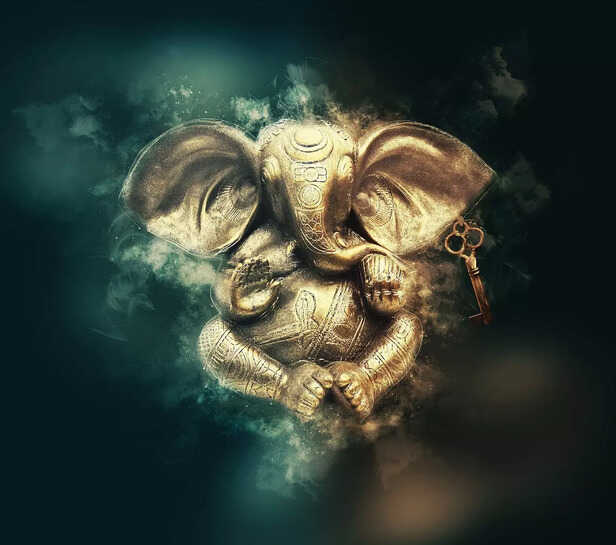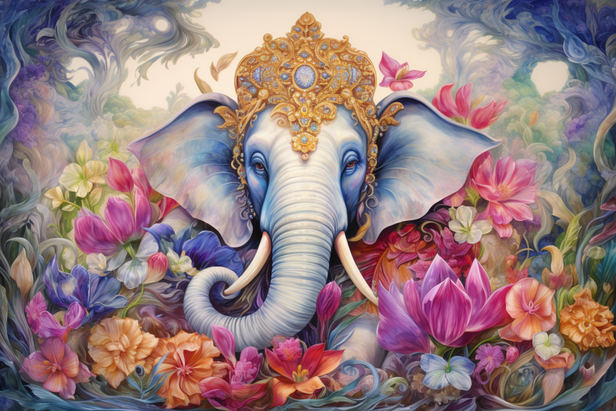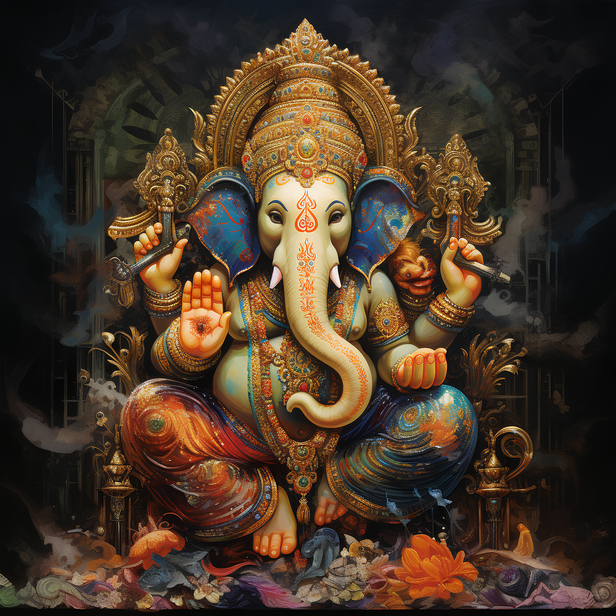The Real Reason Ganesha Loves Modaks
Riya Kumari | Aug 18, 2025, 23:52 IST
( Image credit : Pixabay )
We all know Ganesha as the remover of obstacles, the wise one you pray to before starting anything new. But here’s the part that always makes people smile: Ganesha’s love for modaks. A god with a favorite snack? It feels almost too human. But the truth is, his sweet tooth isn’t about indulgence. It’s about reminding us of something we forget every day.
Every form of the divine carries symbols. Shiva with his trident, Vishnu with the conch and discus, Saraswati with her veena. Ganesha, too, carries many symbols, the broken tusk, the mouse as his vehicle, the large ears. Yet one of his most endearing is simple: his love for modaks. At first glance, it looks like a charming detail of mythology, a god with a sweet tooth. But in the scriptures, the Mudgala Purana, Ganapati Atharvashirsha, Skanda Purana, this love for modaks is not trivial. It is a profound teaching, wrapped in the language of sweetness.

In the Mudgala Purana, Ganesha is described as “Modakapriya”, the one who delights in modaks. But what does this mean? The modak is not just food; it is a symbol of ananda, bliss. The outer shell, plain and unassuming, represents discipline, effort, and the tapas (austerity) required in life. The filling inside, sweet coconut and jaggery, signifies the bliss of Self-realization, the reward of walking the path of dharma.
Ganesha’s love for modaks is not indulgence. It is wisdom expressed playfully. He is showing us that true joy is found not on the surface, but at the center, within the soul.

The Ganapati Atharvashirsha says: Tvam eva pratyakṣaṁ Tattvam asi, “You alone are the visible essence of Truth.” Ganesha represents Brahman, the formless truth made visible. The modak he holds is knowledge itself, sweet, nourishing, liberating. To eat the modak is to internalize wisdom, to make knowledge a lived reality, not just an idea in the mind.
In many depictions, Ganesha offers the modak outward, holding it in his hand. This is not because he hoards sweetness, but because he shares it. Wisdom is not meant to be locked away; it is prasada, a sacred gift to be given and received.

The Skanda Purana narrates that Parvati herself made the first modak and offered it to Ganesha as a reward for his devotion and intelligence. Since then, the modak became his favorite. But beneath the story is this truth: joy is not against spirituality; it is its very essence.
We often imagine wisdom as dry, stern, detached. But Ganesha reminds us that wisdom is also sweet, that the end of all austerity, of all practice, is bliss. As the Taittiriya Upanishad declares: Ānando brahmeti vyajānāt, “Brahman is bliss.” Modak, then, is Brahman made edible, a metaphor you can hold in your hand.

To love modaks, as Ganesha does, is to honor life’s hidden sweetness. Most of us live at the level of the outer shell, busy routines, responsibilities, endless noise. But if we stay the course, if we are patient, we discover the center: joy that is not dependent on circumstances, but arises from within.
Ganesha’s love for modaks tells us: don’t treat joy as luxury. Don’t postpone it to some distant future. It is the essence of wisdom itself. Seek knowledge, live with discipline, but never forget that its fruit is bliss.
When you see Ganesha with a modak, don’t just smile at the image of a god who loves sweets. See the teaching: that life, like the modak, hides its nectar inside. That wisdom, when truly digested, is not heavy but sweet. And that the divine, in all its vastness, is never apart from joy.
The real reason Ganesha loves modaks is the same reason we search for meaning: because at the heart of everything, the truth is sweet.
The Modak as a Symbol of Fulfillment

ganesha
( Image credit : Pixabay )
In the Mudgala Purana, Ganesha is described as “Modakapriya”, the one who delights in modaks. But what does this mean? The modak is not just food; it is a symbol of ananda, bliss. The outer shell, plain and unassuming, represents discipline, effort, and the tapas (austerity) required in life. The filling inside, sweet coconut and jaggery, signifies the bliss of Self-realization, the reward of walking the path of dharma.
Ganesha’s love for modaks is not indulgence. It is wisdom expressed playfully. He is showing us that true joy is found not on the surface, but at the center, within the soul.
The Nectar of Knowledge

lord ganesha
( Image credit : Pixabay )
The Ganapati Atharvashirsha says: Tvam eva pratyakṣaṁ Tattvam asi, “You alone are the visible essence of Truth.” Ganesha represents Brahman, the formless truth made visible. The modak he holds is knowledge itself, sweet, nourishing, liberating. To eat the modak is to internalize wisdom, to make knowledge a lived reality, not just an idea in the mind.
In many depictions, Ganesha offers the modak outward, holding it in his hand. This is not because he hoards sweetness, but because he shares it. Wisdom is not meant to be locked away; it is prasada, a sacred gift to be given and received.
Joy as the Core of Dharma

Ganesh
( Image credit : Pixabay )
The Skanda Purana narrates that Parvati herself made the first modak and offered it to Ganesha as a reward for his devotion and intelligence. Since then, the modak became his favorite. But beneath the story is this truth: joy is not against spirituality; it is its very essence.
We often imagine wisdom as dry, stern, detached. But Ganesha reminds us that wisdom is also sweet, that the end of all austerity, of all practice, is bliss. As the Taittiriya Upanishad declares: Ānando brahmeti vyajānāt, “Brahman is bliss.” Modak, then, is Brahman made edible, a metaphor you can hold in your hand.
What It Means For Us

Ganpati
( Image credit : Pixabay )
To love modaks, as Ganesha does, is to honor life’s hidden sweetness. Most of us live at the level of the outer shell, busy routines, responsibilities, endless noise. But if we stay the course, if we are patient, we discover the center: joy that is not dependent on circumstances, but arises from within.
Ganesha’s love for modaks tells us: don’t treat joy as luxury. Don’t postpone it to some distant future. It is the essence of wisdom itself. Seek knowledge, live with discipline, but never forget that its fruit is bliss.
Closing Thought
The real reason Ganesha loves modaks is the same reason we search for meaning: because at the heart of everything, the truth is sweet.
